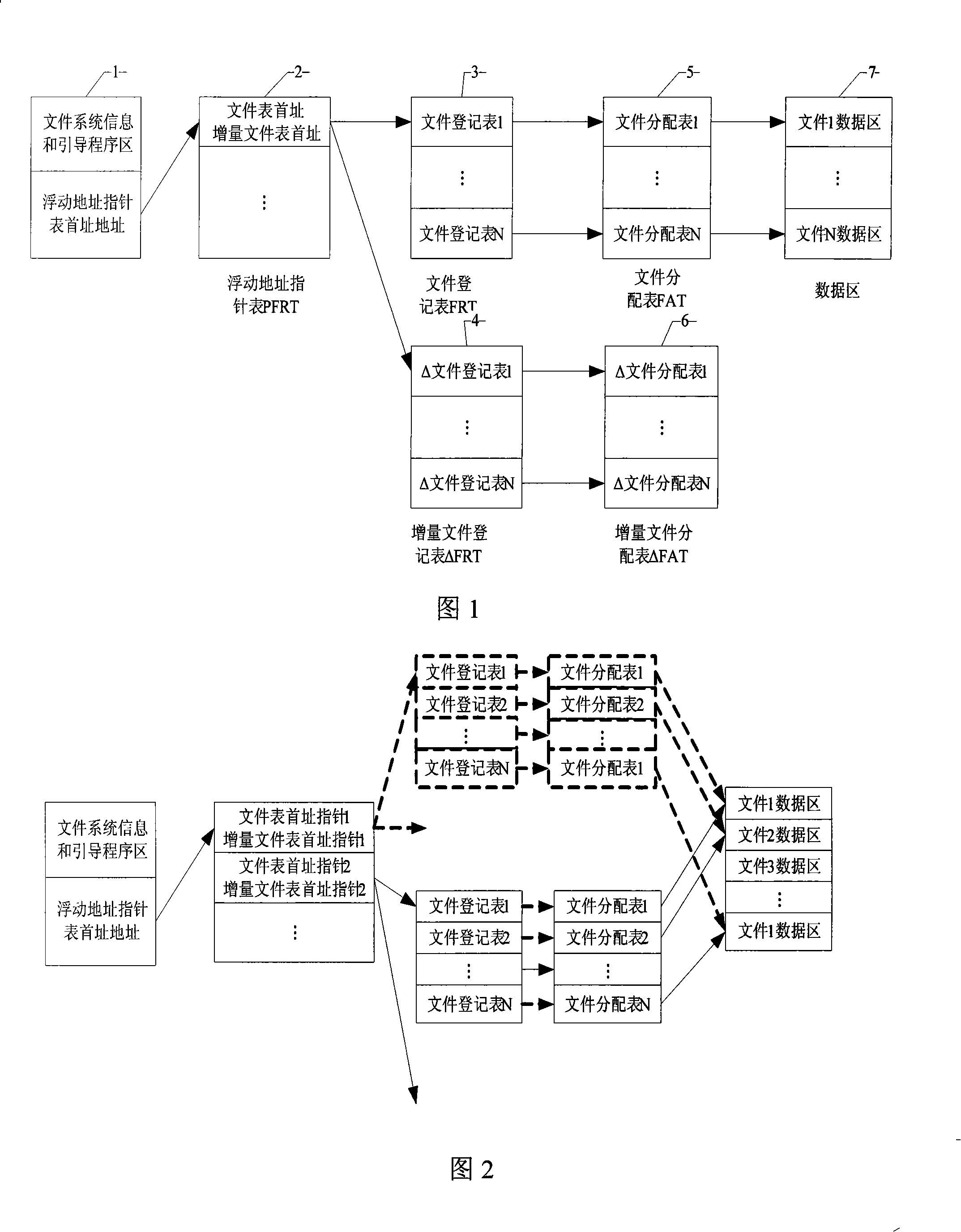Method for building file systems on NAND flash memory in embedded system
An embedded system, a technology for creating files, applied in the redundant operation in the direction of data error detection, instrumentation, response error generation, etc., can solve the problem of insufficient design considerations for reliability, poor application environment, and consumption of a lot of resources, etc. problem, to achieve the effect of small system resource overhead, simple structure and long history
- Summary
- Abstract
- Description
- Claims
- Application Information
AI Technical Summary
Problems solved by technology
Method used
Image
Examples
Embodiment Construction
[0015] As shown in Figure 1, the method for setting up the file system on the NAND Flash memory in the embedded system is to adopt the link page method to manage the single-level directory file system of the storage space, the file registration table FRT of the single-level directory file system 3, the file allocation table FAT 5 Store in floating address mode, change the file registration table FRT 3 and file allocation table FAT 5 in the RAM memory, and write the incremental file registration table ΔFRT 4 and incremental file allocation table ΔFAT 6 in the Flash memory in real-time online in incremental form; The relevant information of the file registration table FRT 3 and the file allocation table FAT 5 in the single-level directory file system are written into the redundant bytes of the relevant Flash data block pages at the same time, as the backup of the single-level directory file system.
[0016] Single-level directory file system consists of system information and boo...
PUM
 Login to View More
Login to View More Abstract
Description
Claims
Application Information
 Login to View More
Login to View More - R&D
- Intellectual Property
- Life Sciences
- Materials
- Tech Scout
- Unparalleled Data Quality
- Higher Quality Content
- 60% Fewer Hallucinations
Browse by: Latest US Patents, China's latest patents, Technical Efficacy Thesaurus, Application Domain, Technology Topic, Popular Technical Reports.
© 2025 PatSnap. All rights reserved.Legal|Privacy policy|Modern Slavery Act Transparency Statement|Sitemap|About US| Contact US: help@patsnap.com


